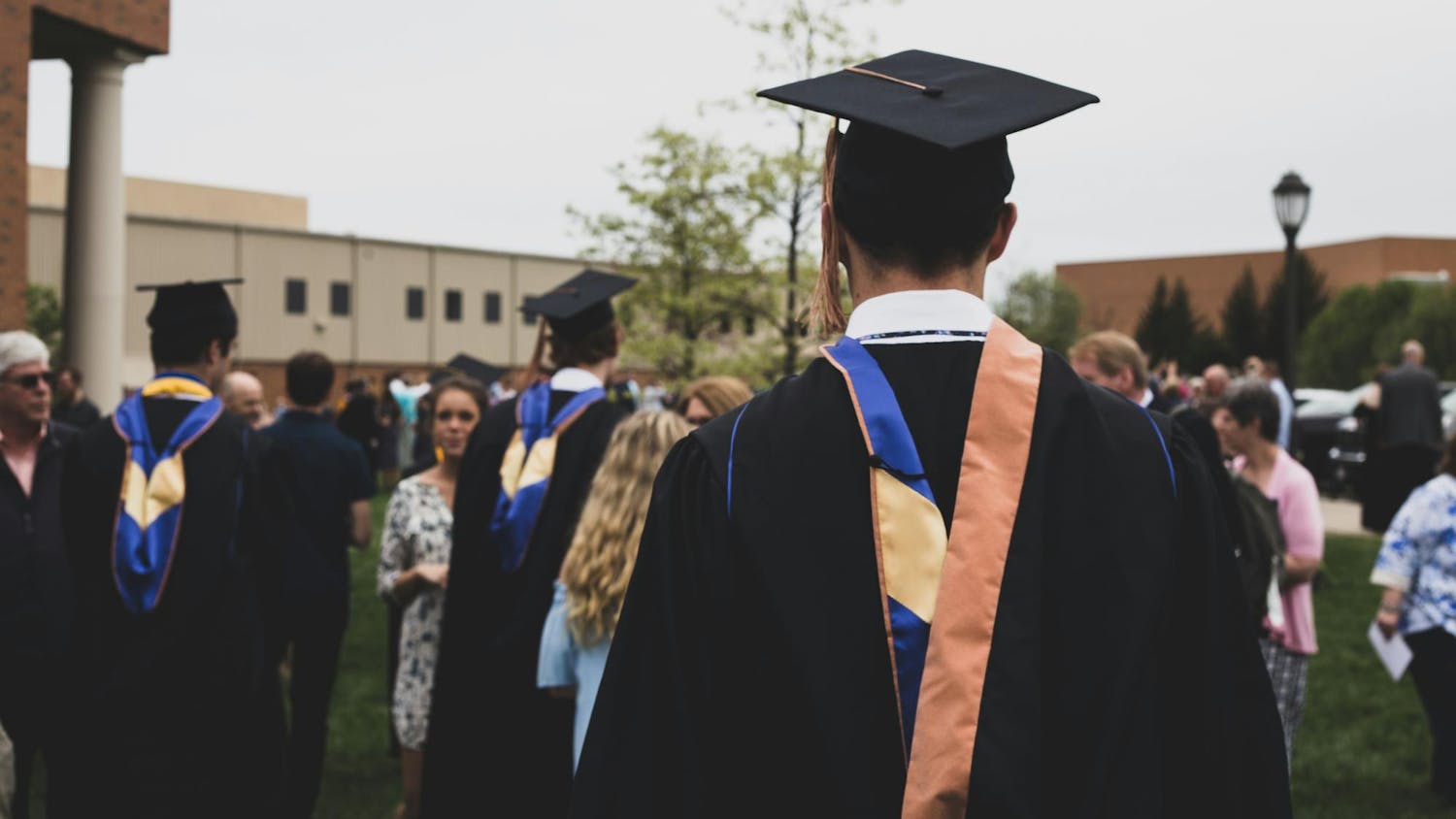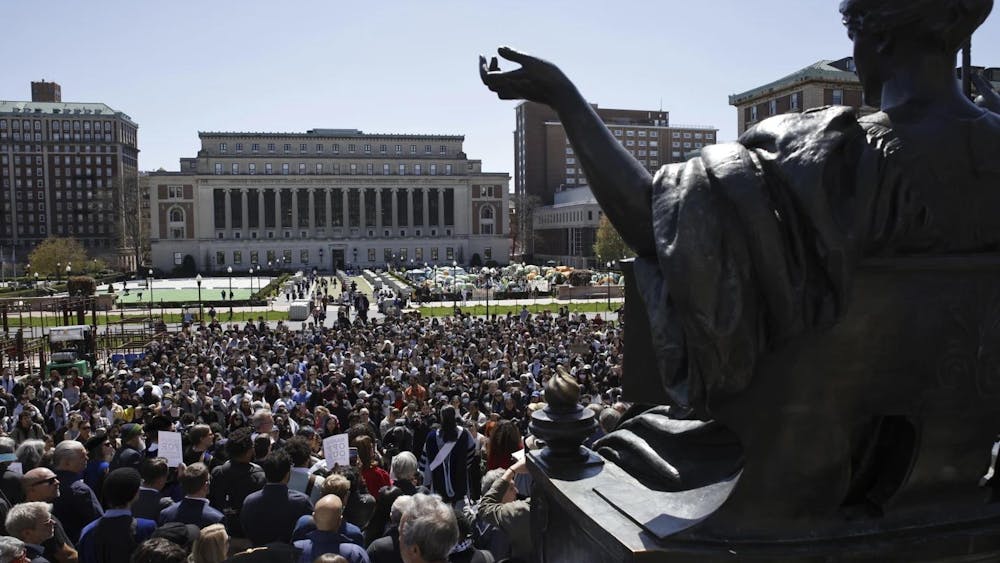To prepare for the upcoming Christian Culture Lecture, Saint Mary’s hosted a discussion about “The Handmaid’s Tale” by Margaret Atwood on Tuesday.
Speakers included Phyllis Kaminski of the religious studies and gender and women’s studies departments, Ann Marie Short of the English department and Laura Williamson Ambrose of the humanistic studies department. The three professors reflected on their own interpretations of the novel.
Ambrose discussed the novel’s genre. She said she does not believe the novel belongs to science fiction or feminist genres and that Atwood resists labels.
Instead, the novel belongs in the speculative fiction genre, Ambrose said. This genre is particularly scary for many readers because it is so realistic, she added.
“Speculative fiction says this could maybe happen tomorrow,” Ambrose said. “It’s more frightening and provocative than science fiction and a distant galaxy, far, far away. ... Speculative fiction makes the work of ignoring a little bit harder.”
Kaminski first read the novel as a doctoral student in Canada. She said she thinks Atwood’s Canadian nationality has a large influence on the novel, and helps Atwood look at the United States with a critical eye.
“Atwood set this [novel] in the United States from the perspective of someone part of a country that was considered lesser than, or other than,” she said. “She sees what happens when we’re superficial and don’t try to move beyond ignorance and ignoring. That’s a real blind spot in the United States. She’s standing north of the border when she thinks and writes, and she sees the differences [between the U.S. and Canada].”
Short said she also thinks Atwood’s Canadian influence impacted how race is presented in the novel. In “The Handmaid’s Tale,” the race of each character is not mentioned.
“The novel is not explicit about race, but it’s clearly a racist society,” Short said. “Is it so obvious that an American world would be racist? It’s not even worth being explicit. It’s a given.”Short spoke about her experiences reading the novel. She said she has read it three times, and her first time reading it was in the ’90s at age 16.
She said at that time, it was not very relatable and felt like science fiction. However, when Hulu announced the television series based on the book, Short returned to the novel. She then read it again to prepare to teach it this semester.
Short said the subject of race in the novel stood out to her, during her second and third times reading the book. In the novel, there are elements of a racist society, Short said. The housekeepers are described as dark skinned, and there is anti-semitic rhetoric in Gilead, for instance.
“It is very clear that Gilead is racist, white supremacist society, but it never says that explicitly,” she said.
The Hulu series practices color-blind casting, Short said, and casts black actors into roles that would probably be white characters in the novel. She said this conveys the message that everyone’s experience is the same in Gilead, regardless of race.
This portrayal of the novel and race is problematic, Short said.
“It erases the issue of racism and says we are in a post-racial society,” she said.
Short questioned how new generations will interpret “The Handmaid’s Tale” as they watch the Hulu series instead of reading the book.“In this moment of Hulu and the questions and critiques of race, what is our responsibility with this novel now?” she said. “In the show, something felt off, and I realized it was the issue of race. How will people who only watch the Hulu series interpret the story?”













